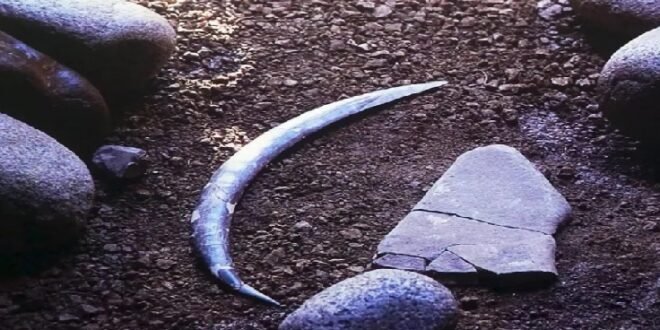27-06-2025
WARSAW/ OBLAZOWA CAVE: The world’s oldest boomerang is older than previously thought, casting new light on the ingenuity of humans living at the time.
The tool, which was found in a cave in Poland in 1985, is now thought to be 40,000 years old.
 Archaeologists say it was fashioned from a mammoth’s tusk with an astonishing level of skill. Researchers worked out from its shape that it would have flown when thrown but would not have come back to the thrower.
Archaeologists say it was fashioned from a mammoth’s tusk with an astonishing level of skill. Researchers worked out from its shape that it would have flown when thrown but would not have come back to the thrower.
It was probably used in hunting, though it might have had cultural or artistic value, perhaps being used in some kind of ritual.
The mammoth ivory boomerang was unearthed in Oblazowa Cave in southern Poland.
It was originally thought to be about 30,000 years old but new, more reliable radiocarbon dating of human and animal bones found at the site puts the age at between 39,000 and 42,000 years old.
“It’s the oldest boomerang in the world, and the only one in the world made of this shape and this long to be found in Poland,” said Dr Sahra Talamo of the University of Bologna, Italy.
It gives a “remarkable insight” into human behaviour, she said, particularly how Homo sapiens living as long as 42,000 years ago could shape “such a perfect object” with the knowledge it could be used to hunt animals.
The boomerang is exceptionally well preserved, with score marks suggesting it had been polished and carved for use by a right-handed individual.
Boomerangs are generally associated with Aboriginal culture in Australia.
However, rare finds in the historical record outside Australia suggest they were used across different continents.
 The oldest known boomerang from Australia dates to about 10,500 years ago, made from wood but the oldest images of boomerangs in Australia are rock art paintings 20,000 years old, according to National Museum Australia.
The oldest known boomerang from Australia dates to about 10,500 years ago, made from wood but the oldest images of boomerangs in Australia are rock art paintings 20,000 years old, according to National Museum Australia.
A wooden boomerang dating back 7,000 years has been found in Jutland, a peninsula between Denmark and Germany, while fragments of a 2,000-year-old oak boomerang which does come back has been found in The Netherlands.
The research by a team of scientists from Poland, Italy, Germany, France, Switzerland and the UK is published in the journal PLOS One.
To better understand the chronology of the Obłazowa Cave, in 1996 the researchers performed a carbon-14 analysis on organic remains discovered in the cave, including the ivory boomerang. However, at 18,000 years old, the boomerang was “unexpectedly young,” raising concerns that the results had been skewed by contamination from adhesives or conservation material, the researchers wrote in the new study.
Evidence of classic Aboriginal boomerangs and throwing sticks dates back at least 20,000 years, according to the National Museum of Australia. These boomerangs are multi-use tools, often used for hunting, fighting or digging but people around the world have fashioned throwing sticks, including one very early example from northern Germany dating back 300,000 years.
In the new analysis of finds from Obłazowa Cave, the researchers undertook DNA and radiocarbon analyses of a human finger bone from the boomerang layer and determined that the person was a modern human who lived at least 31,000 years ago. The researchers also analyzed a dozen animal bones but not the boomerang itself, “to avoid further damage to this highly significant artifact,” they wrote in the study. (Int’l Monitoring Desk)
 Pressmediaofindia
Pressmediaofindia




